Invited Speakers
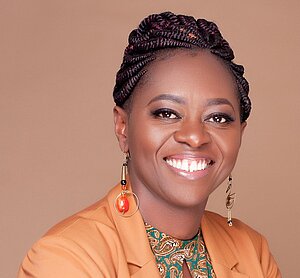 | Prof. Faith Osier Executive Director, IAVI Human Immunology Laboratory (HIL), Imperial College London, Chelsea and Westminster Hospital, NHS Trust, London, UK Seminar Title: Fc-dependent IgG parasite clearance as a guide for vaccine development against P. falciparum malaria Short Bio: Faith trained as a paediatrician in Kenya, specialized in immunology in Liverpool, and obtained a PhD from the Open University in the UK. She is the Executive Director of the IAVI Human Immunology Laboratory (HIL) at Imperial College London. IAVI aims to translate scientific discoveries into affordable, globally accessible public health solutions. The current project portfolio includes HIV/AIDS, Lassa, Ebola, Tuberculosis and Malaria. She previously led two cross-continental research teams in Kenya and Germany with a vision to “Make Malaria History” through vaccination. Her work focused on vaccine candidate discovery, the identification of correlates of protection and the mechanisms that underpin protective immunity. She also aims to inspire and support the next generation of African scientists to provide the solutions that the continent urgently needs. Her work has led to international honors and prizes, including the Royal Society Pfizer Prize, the Sofja Kovalevskaja Award, and an UKRI African Research Leader Award. She is a TED Fellow, an EDCTP Senior Fellow and an official #TOGETHERBAND Ambassador for the United Nations Global Goal 3. Faith is the current President of the International Union of Immunological Societies (IUIS). | |
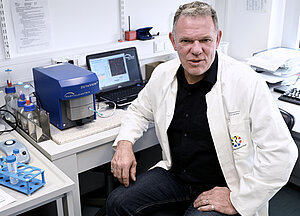 | Prof. Bernd Giebel Institute for Transfusion Medicine, University Hospital Essen, University Duisburg-Essen Seminar Title: Mesenchymal Stem Cell-Derived Extracellular Vesicles: Potential Modulators of the Immune System in Many Diseases. Human mesenchymal stem/stromal cells (MSCs) represent a promising tool in regenerative medicine. Up to now, more than 1000 NIH-registered clinical trials investigated their immunomodulatory and pro-regenerative therapeutic potential in various diseases, including graft-versus-host disease (GvHD) and ischemic stroke. Despite controversial reports regarding the efficacy of MSC-treatments, MSCs seem to exert their beneficial effects rather in a paracrine manner than by cell replacement. In this context, extracellular vesicles (EVs), such as exosomes and microvesicles, are discussed to execute the MSCs’ therapeutic effects. Indeed, we observed beneficial therapeutic impacts of MSC-EVs in a patient, who suffered from steroid-refractory acute GvHD. At the example of an ischemic stroke model we demonstrated that systemically administered MSC-EVs induced neurological recovery in a comparable manner than MSCs. Since EV-based therapies provide a number of important advantages over cellular therapies – for example with sizes between 70 and 150 nm EV products can be sterilized by filtration; EVs cannot self-replicate – and beyond GvHD and ischemic stroke promote therapeutic activities in various disease models, stem/stromal cell-derived EVs are envisioned as next generation cell-free stem cell products in regenerative medicine. It is our mission to optimize the MSC-EV production strategy in a scaled, GMP compliant manner and to set up an appropriate quality assurance platform to translate MSC-EVs into the clinics. One of the challenging aspects in translating MSC-EVs into the clinics are contradictory reports on the efficacy of MSC therapies. Apparently, not all MSCs mediate therapeutic effects when applied into patients. Similarly, we observe functional differences among independent MSC-EV preparations. Thus, to avoid draw backs as they occurred in the MSC field by failing to show efficacy in a phase III clinical trial for GvHD treatment, currently, it is one of our most important missions to set up functional in vitro assays that reliably predict the therapeutic activity of given MSC-EV preparations. | |
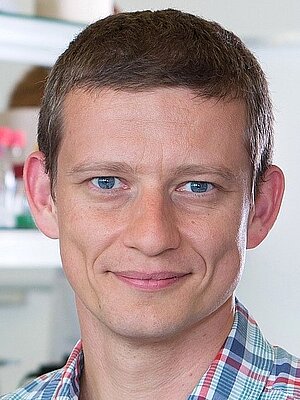 | Prof. Marek Basler Associate Professor at Universität Basel · Biozentrum Seminar title: Type VI secretion system: from the discovery to the mode of action of a dynamic bacterial nanomachine. Bacteria have evolved several nanomachines to deliver proteins from their cytosol to target cells. These nanomachines differ in their structure, secrete various substrates and are often essential for bacterial survival in diverse environments. In my talk, I will describe the journey from the discovery of the Type VI secretion system (T6SS) to the current understanding of its structure, dynamics and mode of action. I will explain how we used a combination of live-cell imaging, cryo-electron microscopy and genetics to show that T6SS is a powerful speargun that pushes proteins across membranes of both eukaryotic and bacterial cells. I will provide evidence that T6SS is evolutionarily related to contractile phage tails and show that subcellular localization of T6SS assembly is in many bacteria regulated with a remarkable precision with implications for its function. I will discuss how T6SS influences bacterial pathogenesis, competition and horizontal gene transfer. | |
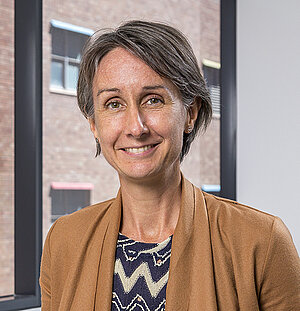 | Prof. Jennifer Rodger Associate Professor at the University of Western Australia and a Senior Research Fellow with Multiple Sclerosis WA and the Perron Institute for Neurological and Translational Science in Perth. Seminar title: Brain stimulation: myths and mechanisms. She completed a Bachelor of Science with Honours in Biochemistry at the University of Bath, UK, followed by a PhD at the University Pierre et Marie Curie, France. Her research investigates mechanisms of brain plasticity and repair, with a focus on preclinical studies of non-invasive brain stimulation in injured and abnormal brain circuits. Her lab has pioneered repetitive transcranial magnetic stimulation (rTMS) studies in adult rodent models and engineered miniaturised rTMS devices to fill critical technical gaps in our ability to stimulate small rodent brains. Her team is recognised internationally with their devices successfully replicating in rodents many of the behavioural, brain connectivity and neurotransmitter changes observed in humans. The significance and impact of the lab’s devices and preclinical findings have been extensively reviewed in a recent issue of "The Handbook of Behavioural Neuroscience" and in "Expert Guidelines" report on rTMS (Expert Guidelines. Clinical Neurophysiology 2021). Furthermore, research using these devices has triggered a re-evaluation of the way rTMS is used in the clinic, leading to clinical trials in spinal cord injury, multiple sclerosis and depression. | |
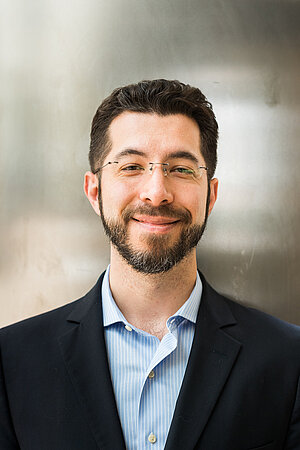 | Prof. Edward Boyden Professor of biological engineering and brain and cognitive sciences at the MIT Media Lab and the MIT McGovern Institute and Co-Director of MIT Centre for Neurobiological Engineering. Seminar title: Tools for Analyzing and Controlling Biological Systems Abstract: Understanding and repairing complex biological systems, such as the brain, requires technologies for systematically observing and controlling these systems. We are discovering new molecular principles that enable such technologies. For example, we discovered that one can physically magnify biological specimens by synthesizing dense networks of swellable polymer throughout them, and then chemically processing the specimens to isotropically swell them. This method, which we call expansion microscopy, enables ordinary microscopes to do nanoimaging – important for mapping the brain across scales. Expansion of biomolecules away from each other also decrowds them, enabling previously invisible nanostructures to be labeled and seen. As a second example, we discovered that microbial opsins, genetically expressed in neurons, could enable their electrical activities to be precisely controlled in response to light. These molecules, now called optogenetic tools, enable causal assessment of how neurons contribute to behaviors and pathological states, and are yielding insights into new treatment strategies for brain diseases. Finally, we are developing, using new strategies such as robotic directed evolution, fluorescent reporters that enable the precision measurement of signals such as voltage and calcium. By fusing such reporters to self-assembling peptides, they can be stably clustered within cells at random points, distant enough to be resolved by a microscope, but close enough to spatially sample the relevant biology. Such clusters, which we call signaling reporter islands (SiRIs), permit many fluorescent reporters to be used within a single cell, to simultaneously reveal relationships between different signals. We share all these tools freely, and aim to integrate the use of these tools so as to enable comprehensive understandings of neural circuits. | |
 | Prof. Alexander Gail Professor of Sensorimotor Neuroscience and Neuroprosthetics at the Georg Elisas Mueller Institute of Psychology at the Faculty of Biology of the University of Göttingen and heading his research lab at the German Primate Center (Göttingen, Germany). Seminar Title: Planning of complex movements in the fronto-parietal cortex of primates Abstract: Primates are highly flexible in translating sensory input into goal-directed behavioral responses. A network of mutually connected frontal and parietal lobe association cortices allows advanced cognitive control. Dorsal premotor and posterior parietal cortex, for example, are involved in delaying responses on demand and keeping them as action plan in prospective memory; weighing competing action alternatives with expected value and prior probabilities; adjusting motor planning activity to the current task demands; and flexibly mapping sensory input information onto variable motor outputs in a rule-based manner. I will review recent experiments in which we studied these cognitive skills in fronto-parietal cortex, including data from wireless recordings in freely moving animals. We ask, in how far motor-goals during ongoing dynamic motor behavior, like planning a reach during walking, is present in these brain areas. With a neuroprosthetic perspective, we explore the possibility to use such signals towards proactive control of ambient assisted living environments in handicapped people. Our results highlight the fact that motor-goal encoding in parietal and premotor areas is highly context-sensitive, i.e., sensorimotor transformations flexibly adapt to the spatial cognitive demands of the current behavioral task, and involved in a much larger behavioral repertoire than was previously possible to study.
| |





